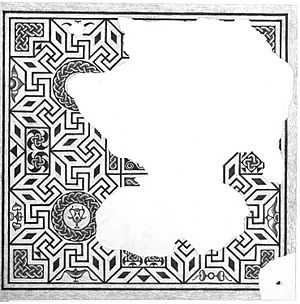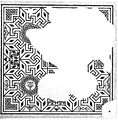Boxmoor Roman Villa facts for kids
Boxmoor Roman Villa was once a large Roman house in Boxmoor, near Hemel Hempstead, in Hertfordshire, England. Today, only its buried ruins remain. This important Roman site was used for a long time, from the first century AD until the fourth century AD.
Contents
Discovering Boxmoor Roman Villa
People first found parts of the Roman villa way back in 1837. At that time, they dug up some remains and even found a beautiful mosaic (a picture made from small colored tiles). They drew a plan of what they found and published it.
Much later, between 1969 and 1970, more complete excavations (digs) took place. This happened because a new school was being built right on top of where the villa once stood. These new digs helped experts learn a lot more about the ancient building.
Life at the Villa
The excavations showed that the Boxmoor Roman Villa had at least five different building stages over time.
Early Days
The very first building on the site was made of wood. It was built around the first century AD. This shows that people lived here quite early in the Roman period.
Stone House Era
Around the year AD 150, the wooden house was replaced by a much stronger stone building. This new villa was built a little further north from the original wooden one.
The stone villa had many rooms. It also featured a covered walkway, called a veranda, on its west side. Some of the rooms were quite fancy. They had special hypocaust heating systems, which used hot air under the floors to keep the rooms warm.
Archaeologists also found beautiful mosaics and colorful wall paintings inside the villa. These discoveries tell us that the people who lived here were wealthy and enjoyed a comfortable lifestyle.
The villa was eventually left empty in the fourth century AD.
What Happens to the Finds?
Some of the interesting items found during the excavations are now kept by the Dacorum Heritage Trust. They help to preserve the history of the area.
Images for kids



